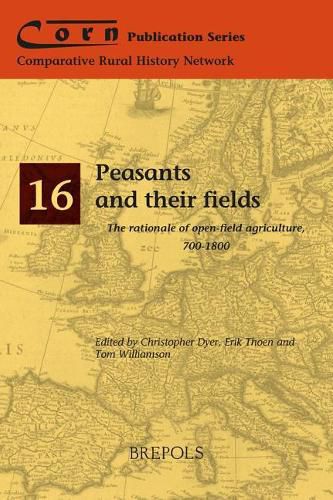Readings Newsletter
Become a Readings Member to make your shopping experience even easier.
Sign in or sign up for free!
You’re not far away from qualifying for FREE standard shipping within Australia
You’ve qualified for FREE standard shipping within Australia
The cart is loading…






In the middle ages and the early modern period open fields could be found in many if not most countries of Europe. They took a wide variety of forms, but can in essence be defined as areas of cultivated land in which the intermingled plots of different cultivators, without upstanding physical boundaries, were subject to some degree of communal management, in terms of cropping and grazing. Sometimes such fields occupied a high proportion of the land in a district, but often they formed a relatively minor element in landscapes which also contained enclosed fields, woodland or expanses of pasture. In some areas, open-field agriculture had already been abandoned before the end of the middle ages, but in others it continued to flourish into the nineteenth or even twentieth centuries. Although open fields have long been studied, by geographers, historians and archaeologists, much about their origins, development and rationale remains contentious. Why, across wide areas of Europe, did such fields sometimes become central to the experience of so many of our ancestors, shaping not only farming practices but also the basic structures of their everyday lives? And why, in contrast, did they fail to develop, or have a less significant role, elsewhere? Over recent decades open fields have been investigated in new, interdisciplinary ways, and as a Europe-wide phenomenon. In this book, more than ever before, their development and operation are explained in terms of economic, social, agrarian and environmental developments which were shared, to varying degrees, by all parts of the Continent. It contains ten new studies from a wide range of regions, together with important comparative research from south America and Japan. This collection of essays represents a milestone in the study of open-field agriculture, and is a major contribution to the study of the rationale of field systems more generally.
$9.00 standard shipping within Australia
FREE standard shipping within Australia for orders over $100.00
Express & International shipping calculated at checkout
In the middle ages and the early modern period open fields could be found in many if not most countries of Europe. They took a wide variety of forms, but can in essence be defined as areas of cultivated land in which the intermingled plots of different cultivators, without upstanding physical boundaries, were subject to some degree of communal management, in terms of cropping and grazing. Sometimes such fields occupied a high proportion of the land in a district, but often they formed a relatively minor element in landscapes which also contained enclosed fields, woodland or expanses of pasture. In some areas, open-field agriculture had already been abandoned before the end of the middle ages, but in others it continued to flourish into the nineteenth or even twentieth centuries. Although open fields have long been studied, by geographers, historians and archaeologists, much about their origins, development and rationale remains contentious. Why, across wide areas of Europe, did such fields sometimes become central to the experience of so many of our ancestors, shaping not only farming practices but also the basic structures of their everyday lives? And why, in contrast, did they fail to develop, or have a less significant role, elsewhere? Over recent decades open fields have been investigated in new, interdisciplinary ways, and as a Europe-wide phenomenon. In this book, more than ever before, their development and operation are explained in terms of economic, social, agrarian and environmental developments which were shared, to varying degrees, by all parts of the Continent. It contains ten new studies from a wide range of regions, together with important comparative research from south America and Japan. This collection of essays represents a milestone in the study of open-field agriculture, and is a major contribution to the study of the rationale of field systems more generally.